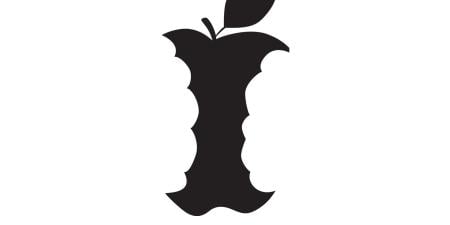Case
It was a hot August afternoon. After a long day of dialysis assessments at a large academic medical center, Dr. Jones, an attending-level nephrologist, stopped at a nearby convenience store on his way home to make a last-minute purchase. A group of teenagers was in the store buying snacks. Dr. Jones also noticed a new cardiology fellow who was wearing his white coat and scrubs, probably on his way home after a day in the cardiac cath lab. In full view of the teenagers, the young cardiologist purchased two packs of cigarettes and lit one up in a nonchalant manner on his way out the door. Watching the receding figure through the store windows, the teenagers began holding their throats and coughing theatrically. The nephrologist, a lifelong nonsmoker, was taken aback by the fellow’s behavior.
Commentary 2
It might be surprising to learn that 2.3 percent of physicians in the U.S. smoke cigarettes [1]. It is even harder to believe that in 1946 there was a Camel cigarette ad with the headline “More Doctors Smoke Camels Than Any Other Cigarette!” and citing a nation-wide survey of doctors as support [2]. As the nation attempts to focus efforts on disease prevention, it is imperative that we understand why even the 2.3 percent of physicians who smoke remain addicted, knowing what they know about biochemistry of nicotine.
While this case seems to be straightforward, there are several factors to consider. The smoker is a physician colleague who is addicted to nicotine and willing to ignore the standards of professionalism in order to have a cigarette. How would one approach such a colleague?
There are at least four perspectives to consider:
- A “purist” perspective (No one should smoke; smoking is bad for one’s health.)
- A professionalism perspective (Doctors, especially, should not smoke, and those who do should not smoke in public where they are likely to be recognized as doctors.)
- A beneficence view (The individual’s inability to quit smoking must be due to excessive stress; the smoker may need help.)
- A respect for autonomy view (The individual has a right to make his or her own life decisions, be it smoking, not eating well, not exercising, as long as he or she is not directly harming others.)
The view or perspective one adopts determines the extent to which one feels justified in intervening in the cigarette-buying cardiologist’s affairs.
If one adopts the purist, professionalism, or beneficence view, one is likely to intervene. Only the radical respect for autonomy view supports nonintervention. I believe that intervention is justified in this instance and that an approach that entails empathy for the cardiology fellow’s tobacco addiction is best—a hybrid of the professionalism and beneficence views. Still, one does not simply walk up and inform the cardiology fellow that smoking in front of others while wearing scrubs represents less-than-desirable professional behavior. The nephrologist could, however, walk up and mention that they both work at the same hospital and ask what sort of day the cardiologist had. This could lead to further questions about work and life.
Studies have shown that physicians are powerful role models for patients and that physicians who engage in healthy behaviors are more likely to counsel their patients on such behavior [3]. Given this information, the fact that the cardiologist was smoking in front of “tweens” further argues for intervention. Children from age 12 years into their early 20s are highly impressionable, and they are particularly vulnerable to exposure to addictive substances such as tobacco and alcohol [4]. The cardiology fellow has actually exposed these young “tweens” to a harmful substance and set a bad example as a professional.
Overall, an intervention in this case will require compassion, empathy, and establishing rapport and therefore trust in order to convey a message that smoking is harmful to self and others and is less-than-professional behavior.
References
- Sarna L, Bialous SA, Sinha K, Yang Q, Wewers ME. Are health care providers still smoking? Data from the 2003 and 2006/2007 Tobacco Use Supplement-Current Population Surveys. Nicotine Tob Res. 2010;12(11):1167-1171.
-
LIFE. January 7, 1946: 102. http://books.google.com/books?id=BEkEAAAAMBAJ&pg=PA21&dq=life+magazine+January+7,+1946&hl=en&ei=BJl7Tq7wCcHksQKT8tHBAw&sa=X&oi=book_result&ct=result&resnum=1&sqi=2&ved=0CDUQ6AEwAA#v=onepage&q=camel&f=false. Accessed September 22, 2011.
- Lobelo F, Duperly J, Frank E. Physican activity habits of doctors and medical students influences their counseling styles. Br J Sports Med. 2009;43(2):89-92.
-
Shute N. How to deploy the amazing power of the teen brain. US News and World Report. November 26, 2008. http://health.usnews.com/health-news/family-health/brain-and-behavior/articles/2008/11/26/how-to-deploy-the-amazing-power-of-the-teen-brain. Accessed September 12, 2011.



